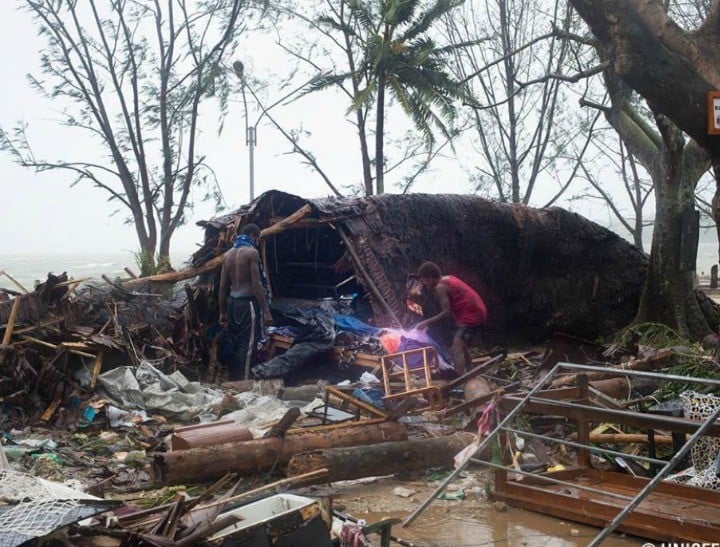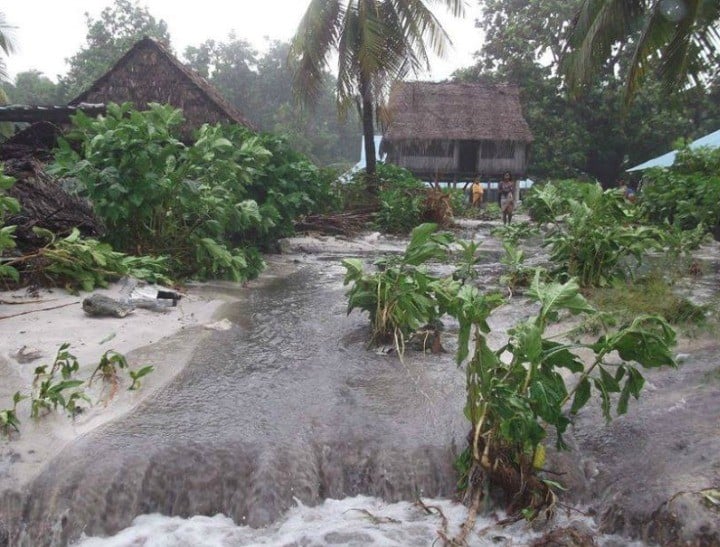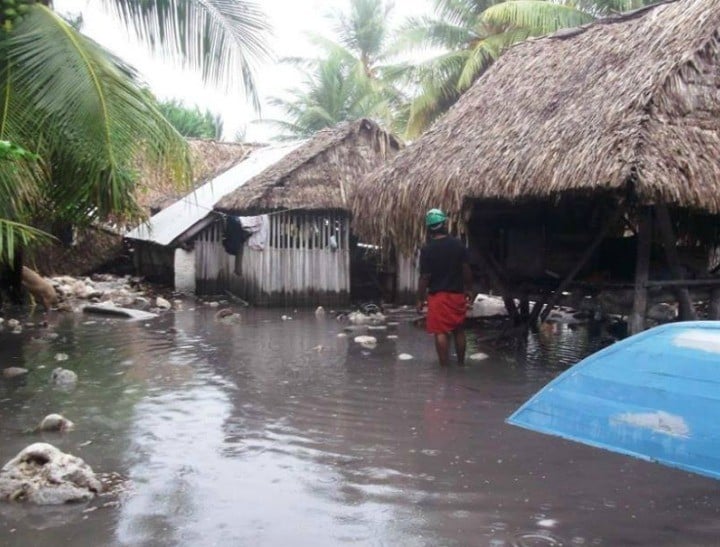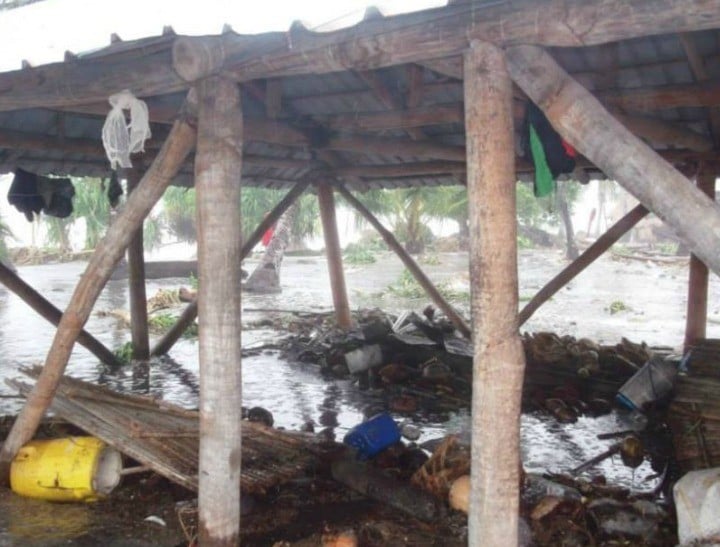
At least four people have died in Vanuatu’s capital of Port Vila, a witness says, in one of the strongest tropical cyclones to have hit the South Pacific.
It comes amid unconfirmed reports that more than 40 people may have perished elsewhere in Vanuatu as a result of Cyclone Pam.
One person has also died in Papua New Guinea’s West New Britain province after a tree fell onto a house during strong winds driven by the storm.
READ MORE: One mum describes being caught in the middle of Cyclone Marcia.
Vanuatu coordinator of climate change not-for-profit organisation 350, Isso Nihmei, said he and others tried to rescue three people in Port Vila who later died in hospital.
































































































